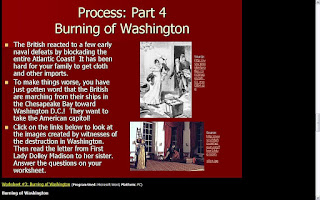
TAH’s Encounters and Exchanges, the predecessor to History Connected, began five years ago. It’s first history book club discussion group read Founding Myths by Ray Raphael. The presentation, Race and the Civil War, given by Professor Patrick Kelly of University of Texas at San Antonio at History Connected’s summer institute, made me think it would be fitting to include Lincoln, as his Gettysburg address initiates the re-founding of the United States, recalling the sacred principles of 1776, in this book.
Professor Kelly opened with the idea that Lincoln is the victim of his myth, -that he was, from the start, a hero to the slaves, their champion, working for and in their best interest- which unfortunately overshadows two of his greatest qualities, the evolution of his thought and his role in the transformation of the US to a multicultural democracy. Professor Kelly used the Freedmen’s Monument in Lincoln Park to illustrate this myth. A picture of this monument would serve as a great hook. Perhaps your essential questions could be, “How is Lincoln remembered?” and “How should Lincoln be remembered?” In opening a lesson with a picture of the Freedmen’s Monument, you could use the following questions to guide a student discussion in pursuit of these essential questions, “What is the message of the statue?,” “What is the purpose of the monument?,” and “What are the different interpretations of the monument?”.
Professor Kelly used two primary source documents that reveal insight into how Lincoln should be remembered. In an August 22, 1862 letter written in response to critique from the editor of the New York Tribune, Horace Greeley, Lincoln explains and defends his interpretation of his duty as President, to save the Union. (In analyzing this document, a great starting point would be to ask students to county how many times Lincoln uses this language/idea.) This focus of Lincoln’s letter is essential to understanding not only his interpretation of his constitutional responsibilities but of how he gained public support for the war. Though some Northerners were against slavery, it didn’t mean that they cared about the individual slave. I constantly remind my students of this reality, that though whites were willing to die in defense of their country, very few would be willing to die for an African American. It’s a harsh reality, but illustrates the constituency that voted for Lincoln in 1860 and he would need them to vote again for him in 1864.
Professor Kelly paired this source with Frederick Douglass’s “Oration in Memory of Abraham Lincoln,” April 14, 1867, which was delivered at the unveiling of the Freedmen’s Monument. Frederick Douglass puts it out there, reminding people, in light of the statue of Lincoln guiding an African American up from his knees and out of his chains, that Lincoln was a politician, doing what he needed to do for his people. The words of Douglass seemed to sting at first, it was almost blasphemous to me to present Lincoln with the sugar coating of his myth.
So where does that leave Lincoln? No fear, we can still keep him on a pedestal. Professor Kelly ended his presentation in stressing that the greatness of Lincoln was that he was a flawed person from a flawed society, but he launched America into a new, multicultural democratic nation. As the idea of myths in history have been popular in the history classroom, hooking students’ interest with the real story, perhaps, this lesson idea would be an interesting continuation of this thread throughout your curriculum. I know I am interested to see how my students interact with these documents and their understanding of Lincoln and American society develops!









